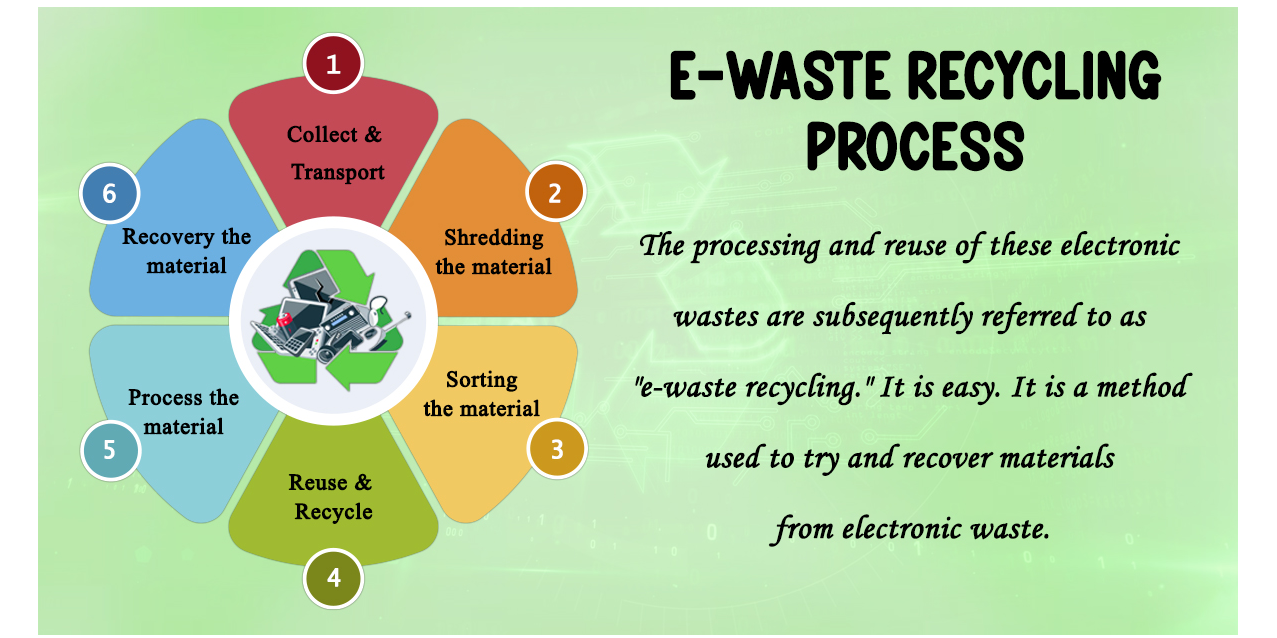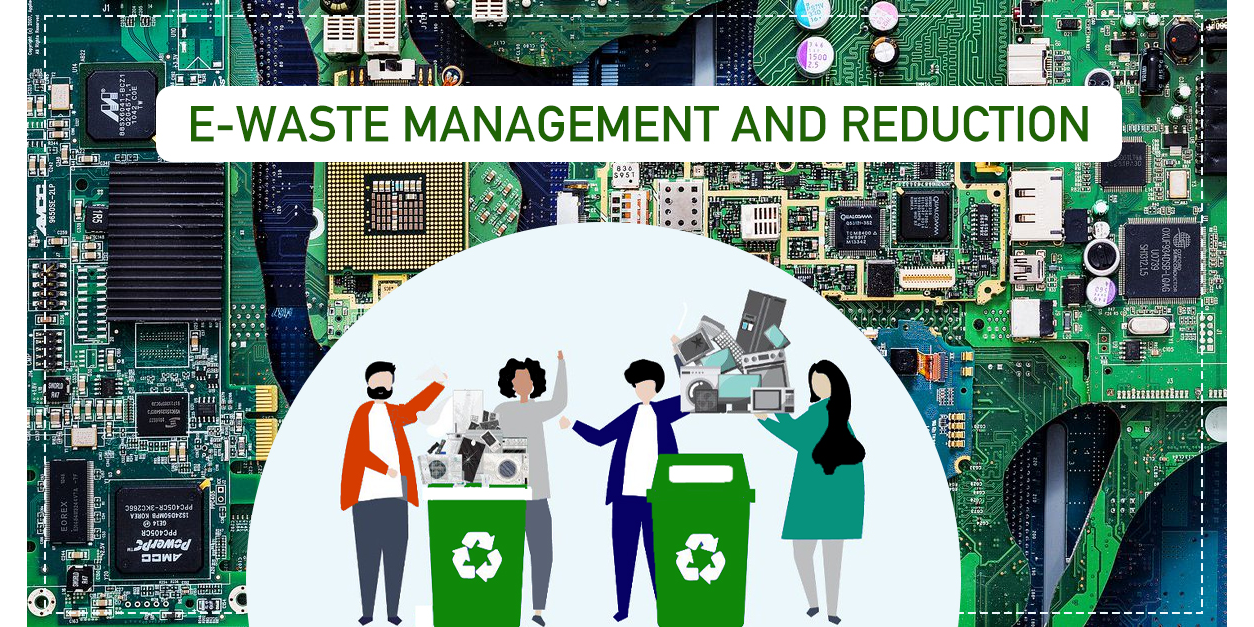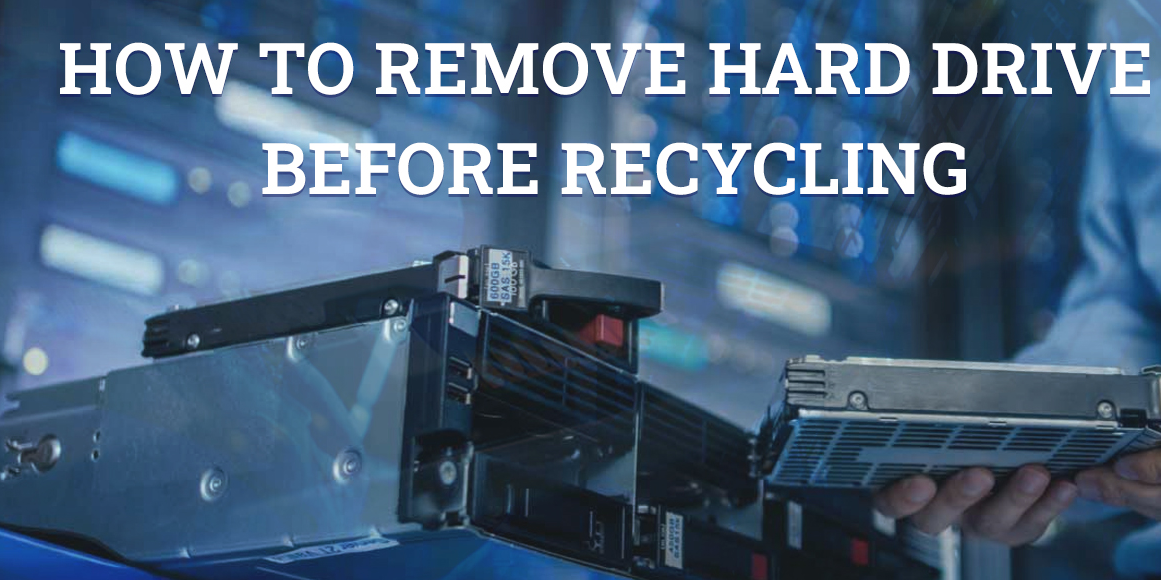
01 Feb 2023
Process Of E-Waste Recycling
E-waste recycling is the reuse and reprocessing of electrical and electronic equipment of any type that has been discarded or regarded as obsolete. Recycling of e-waste is a growing trend and was initiated to protect human and environmental health mainly due to the widespread environmental pollution impacts of e-waste.
- Collect the Materials
- Transport the Materials
- Shredding the Materials
- Reuse & Recycle
- Process and Recovery Materials
Collect the materials:
The collection of e-waste is one of the initial stages of the recycling process, at SKV E-Waste. Here, Recyclers place collection bins or electronics take-back factories in specific locations and transport the collected e-waste from these sites to recycling plants and facilities.
Transport the materials:
The transportation of electronic waste is the movement of waste over a specific area by trains, tankers, trucks, barges, or other vehicles. Hazardous electronic wastes may be transported to be treated, stored, or disposed of.
Shredding the materials:
E-Waste shredders are machines utilized in recycling and waste processing applications. They can reduce various waste materials that differ in dimensions, sort, weight, and composition to uniform shape and size for more efficient processing, storage, and transportation.
E-waste then goes through the initial stage of manual sorting, where various items are removed for their processing. This is the stage at which some items may also be manually dismantled for components, reuse, or the recovery of valuable materials.
E-waste is then shredded into small pieces allowing for accurate sorting of materials, a key part of the process. Most electronics are a mix of materials, and breaking items down into pieces that measure just a few centimeters means they can be separated mechanically.
Reuse & Recycle:
Reuse is the action or practice of using an item, whether for its original purpose or to fulfill a different function. It should be distinguished from recycling, which is the breaking down of used items to make raw materials for the manufacture of new products.
Process and Recovery Materials:
E-waste recycling helps recover valuable materials from electronic products that are either old or no longer used. In turn, this saves and conserves natural resources. This is because manufacturers can now obtain raw materials from recycled waste.
“Reuse the Past, Recycle the Present, Save the Future”




